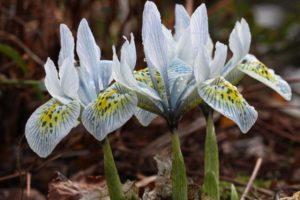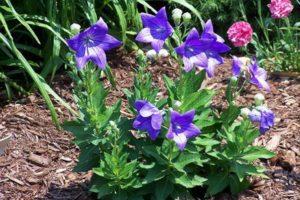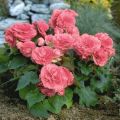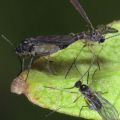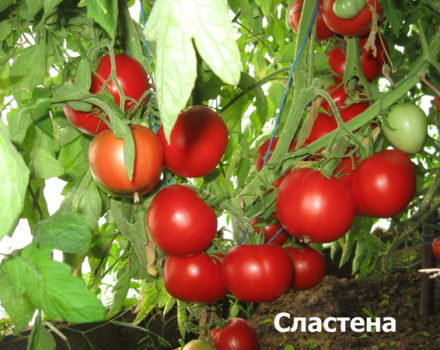Planting, growing and caring for begonias, how they reproduce
Begonia is in great demand among indoor plants. It has been cultivated in the countries of the former USSR since the 20th century. The plant got its name thanks to the scientist C. Plumier, in honor of the manager of the Haitian colony M. Begon. You should familiarize yourself with the rules of caring for begonia, all the nuances of culture.
Required conditions for successful plant growth
Begonia is a heat-loving flower, but it cannot be placed in direct sunlight, there is a risk of burning the leaf surface. Usually the plant is grown on windowsills that are on the north or east side. It is most important to comply with this condition for rhizome species with beautiful foliage.
Flower shrubs and semi-shrubs also prefer to grow in partial shade, but abundant lighting does not harm them. The variety adapts well to sunlight. Exceptions include garden tuber begonia. It is often planted in broken sunny areas, lawns.
Air humidity rate
The flower prefers to grow in a place with 60% humidity. You can maintain this level with a bowl of water, which is placed near the battery. They also use a special electrical device. It is forbidden to spray begonia, as it can die. Drops falling on the leaves leave behind spots of a brownish tint, which entails the fall of the foliage.
Temperature range for begonias
In spring and summer, the temperature in the room where begonia grows should be 20-25 degrees Celsius. In cold months from +18 to 20. Pollen lasts from May to November with proper care.

The required composition of the soil and the size of the container for planting
Begonia is grown in small containers, since its rhizomes do not tolerate wet soil well. The plant must completely occupy the cavity of the pot. In order for begonia to grow without problems, it should be transplanted into a new container of a larger diameter by 2 cm. The soil should be applied as leafy, nutritious. You can combine it with sand, peat with a ratio of 1: 1: 3. Sometimes purchased soil is poured into pots with begonia, then peat should be preferred.
How to care for begonia
Growing indoor begonias implies certain care requirements. It is necessary to regularly water the crop, fertilize, prune, transplant, treat diseases and harmful beetles.
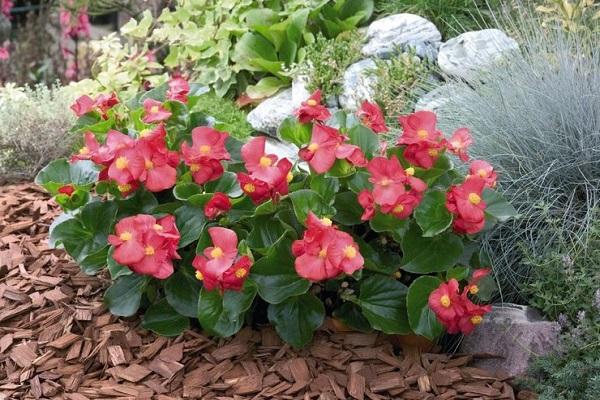
Organization of competent watering
The flower should be watered regularly, but in moderation. The water should not be hard. If this is the case, soften it with vinegar. Take 1 tbsp. for 10 liters of water. You can also water the begonia with slightly acidic mineral water.
Regular feeding of begonias
Fertilizers should be applied in order to improve pollen and plant health. In spring, begonia grows shoots and leaves. Mineral dressing is added to the soil. In summer, budding occurs, then the plant needs potassium-phosphorus compositions. Fertilizers are applied once every 14 days.
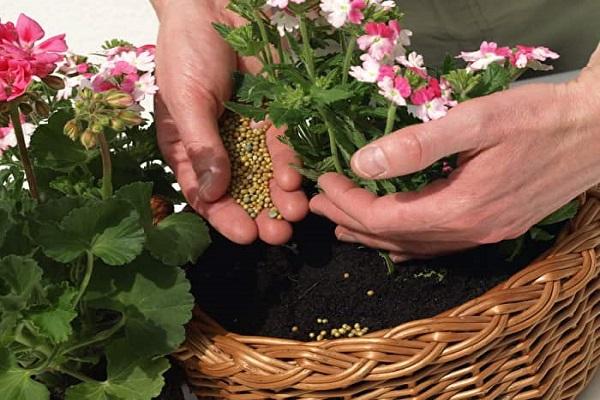
Pruning - creating lush bushes and begonia blooms
Faded buds are carefully removed from begonia bushes, fallen inflorescences are collected on the ground. If a large number of such flowers are not lying on it, they will be greatly wetted by watering, possibly rotting. Falling buds sometimes signals overheating of begonias or over-irrigation. If excessive sunlight is to blame, you can move it to a darker place. Such pruning is carried out again for the winter before the shelter.
How often should the bush be replanted
Begonia transplant is carried out as needed. Usually it is required when the plant becomes uncomfortable in the pot, usually 2-3 months after purchase, more space is required. The transplant should be carried out in March. Begonia is taken out of the container, carefully freed from the old soil so as not to damage the rhizome with stems. To cleanse the sand, a light solution of potassium permanganate is used, the root system is lowered there for 30 minutes.
If places of decay are visible on it, they are removed. The peeled flower is transferred to a new substrate. After that, you should often water the plant with settled water. The soil is not poured to the top, you need to wait for the rhizome to dry, then add it.
Do not expose the recently transplanted culture to the sun, but do it after 1 month. Until this time, the flower should be in partial shade.
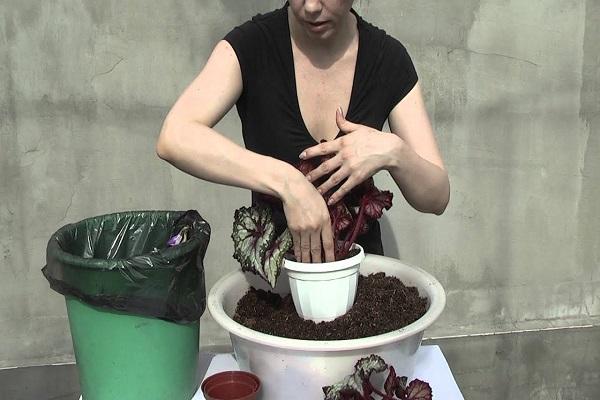
Also, it should be shortened by 2/3 to form a fresh bush.
Winter care
In winter, it is also necessary to care for room begonia. The temperature regime should be properly organized, it should be within 18-22 degrees Celsius. Watering is rare, 3 times less than in summer. After wintering, cut the cuttings 7-8 cm in length. In early March, you can apply growth stimulants and immunomodulatory agents, like Epin, Zircon, alternately.
Begonia diseases and pests
At high humidity, low air temperatures, flowers and leaves can become covered with whitish spots - powdery mildew. They should be treated with a fungicide diluted with water. The sprayer is charged with the solution. The specific processing algorithm is prescribed in the annotation for each drug. First, cut off all affected leaves on begonias.

Another flower can be attacked by aphids, spider mites. This happens when it grows in open ground conditions. They destroy pests with purchased poisons, spraying and watering with unconventional recipes. These include soapy water, tincture of onion peels and garlic stalks, ash and water.
If the flower dries and turns yellow
Sometimes yellow spots are formed on the surface of the leaves, this indicates a mosaic damage. The infected parts are destroyed. The cause of the disease is the cold temperature in the room where the begonia is located, and the excessive moisture content in the soil. When the potted substrate is dry, move it to a warm place.
Does not bloom
Sometimes buds do not form if the room is too dry air, heat or cold. Sometimes the reason is an overabundance of nutrients, finding a flower in a draft.To achieve flowering, place the pot in a different room or stop fertilizing. There may be pests in the ground that affect the rhizome. Then a transplant is required, preliminary washing of the roots in a manganese solution.
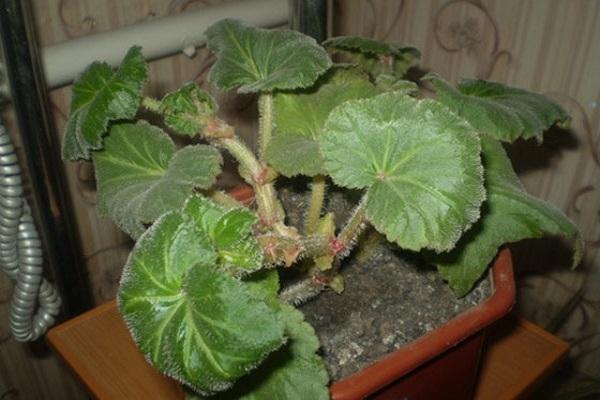
Several breeding options for begonias
Flowers should be propagated by cuttings, seeds, leaves, dividing bushes and rhizomes. The procedure is carried out due to the fact that the plant loses its decorative effect after 3-4 years.
Sowing seeds
This method is quite laborious, it is rarely used for cultivation. The event starts in February.
- A drainage layer of 2-3 cm is poured onto the bottom of a large box. It is advisable to give preference to large pebbles.
- Leafy earth is sifted through a sieve, poured over a 2-3 cm drainage layer.
- A layer of snow is placed on top of the soil, seeds are sown evenly on it.
- The box is covered with plastic wrap, since the seedlings do not take dry oxygen well.
- When the seeds hatch, the cover is removed, and the container is placed in a lighted, slightly darkened place.
- For the first time, a pick is carried out after the first leaves appear on the seedlings. They are planted in another box, having previously filled it with leafy soil with a small amount of peat and sand. There should be a distance of 2 cm between the beds and individual plants.
- When the seedlings become crowded, a second pick is carried out. A combination of leafy earth, humus, sand, peat is poured into the box, with a calculation of 4 * 1 * 1 * 1. Planted according to the 3 * 5 scheme.
A flower grown from seed will thrive at temperatures above 20 degrees Celsius. Periodically disinfect the soil in the boxes by pouring it with a non-concentrated solution of potassium permanganate.
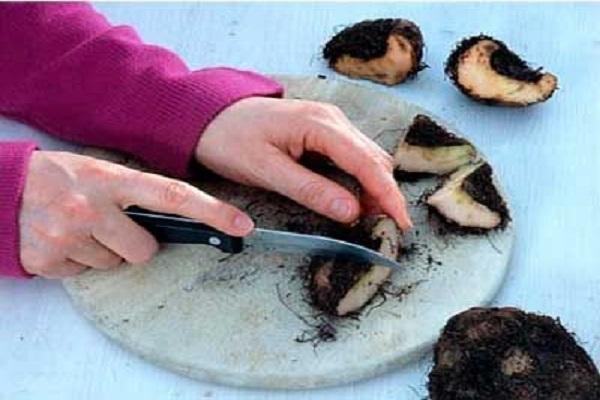
Tuber division
For this method, bush begonias are used. Bushes with divided rhizomes are planted in separate pots. At the time of rooting, they should be located in a bright and warm room.
General rules for grafting begonia
To propagate the culture by cuttings, young, slightly lignified stems are taken, on which at least 2-4 buds are located. An oblique cut is made under the lower knot with a sharp knife. Large leaves are excised from the petiole, and small ones are left. They should be planted one at a time. You can also use a large box, but then place the seedlings at the edges.
Cuttings rise safely provided oxygen circulation is free. Leafy earth with sand and peat is poured into the boxes. 3-5 days before planting, wet the petioles. Before planting, the soil is not watered. The cuttings are carefully poked into the soil and covered with cling film on top. For 2 weeks, spray and ventilate the plants every day, removing the shelter for 10 minutes. Before disembarking, it is finally removed.
Training
Planting crops in the garden usually occurs in May or early June. Seedlings are pre-watered so that an earthen lump is preserved. Sprouted seedlings are shortened by cutting off the lower long branches, or the plant will quickly discolor. The well is also irrigated, begonia is placed in it along with an earthen clod, and the soil around is tamped.
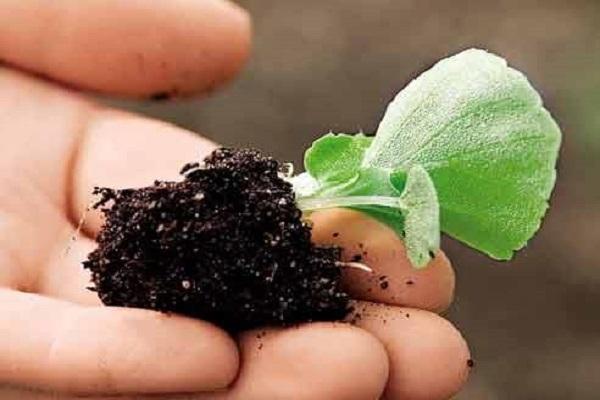
Planting a plant
Begonia is one of the most unpretentious crops that do not require painstaking care. The technology of planting a flower in a permanent place in the garden is also easy. After selecting a place, the seedlings are fixed in the soil so that all the green part remains on top. A distance of 25 cm is maintained between the bushes. If the plant is injured during planting by the type of falling to the ground, the foliage will be damaged - it may not take root.
Separation of bushes
Growing begonias as a bush species can be propagated by division. The plant is taken out of the ground, the roots are soaked in water, they are carefully divided into parts, so that each has its own bud and sprout.Dried leaves and buds are removed, and the cut sites are treated with coal. Bushes are planted in pots, watered.
Propagated by leaves
The method of propagation of begonia with leaves is in demand among lovers of indoor plants. Below are the techniques for such manipulation. They must be observed clearly, in stages, or the seedlings will not take root.
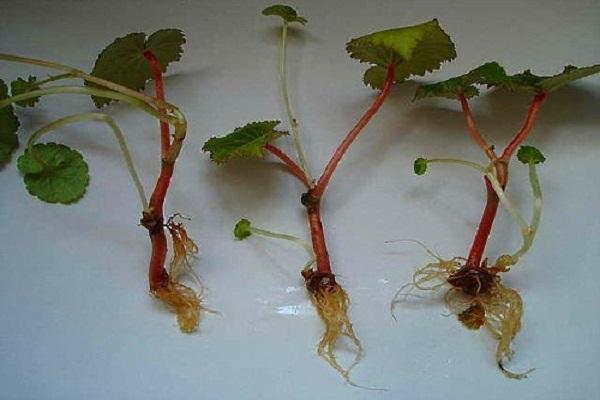
One leaf - ten begonia bushes
The technique involves cutting the leaves into 10 pieces. A sharp tool should be used, as a dull knife will crush tissue. It is advisable to sterilize the cutting object with a cotton swab dipped in alcohol.
The procedure is carried out in this way:
- a healthy, large leaf is removed from the mother bush, cut into squares 2 cm long;
- the ready-made seedlings are planted vertically in moist soil;
- the box is covered with cling film.
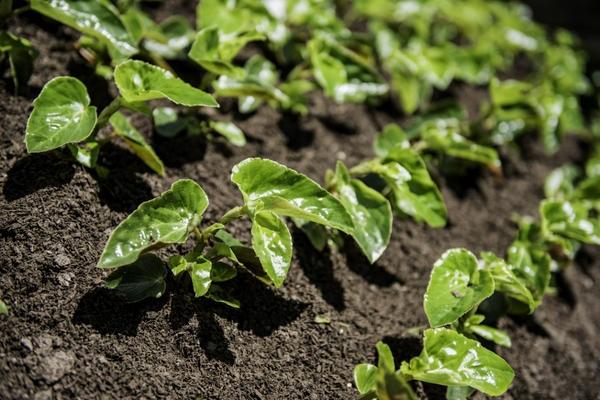
The event usually does not cause difficulties even for novice gardeners, leaves sprout after 3 weeks on average. When this happens, the boxes must be ventilated. The film is first removed for half an hour a day, then, the period is gradually increased. The plant must adapt to room temperature in 1 week. After 3 months, young flowers can be dived. Take loose soil, without tamping it in a pot. To prevent it from getting too rough when planting, pour water over it.
Leaf-stalk
Take 1 large leaf with a shank-leg at least 7 cm long, 1 pot of the same diameter. Cut it across the veins, cutting each large one, lay it on top of the ground, sticking it into it. The soil should be well moistened. From above, slightly press down the sheet with perlite. Build a greenhouse over it by throwing a film on top. Sprout a future flower on a sunny windowsill, in a warm place. The begonia should be ventilated and watered periodically. Young plants are formed in 1 month. When the nascent bushes appear, they can be put into a bag. A pick in different cups is carried out when the seedlings are strong, about 2 months after planting.
